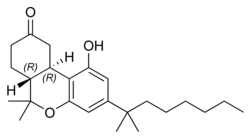British Medical Association Harwood Academic Publishers, 11.99 [pounds sterling], pp 142 ISBN 90 5702 318 0
When it comes to cannabis, beliefs and principles strongly shape the position that people take. To legalise, to decriminalise, or to punish further in the face of a growing population of young cannabis consumers is the question of the day. These two books are likely to make a substantial contribution to this debate.
The BMA publication is an historic document that grew out of a resolution from the BMA annual representative meeting in 1997 "that certain additional cannabinoids should be legalised for wider medicinal use," and this report supports the policy statement by describing the scientific evidence for wider medicinal use of cannabinoids. It provides a lucid and critical update on the current state of research and future possible research on the therapeutic use of cannabis.
The scant scientific evidence that exists does not suggest that cannabis and its derivatives are an important missed opportunity in the search for new therapeutic agents. However, the restrictions placed on researching cannabis derivatives may be partially to blame, and the role of oral cannabis products such as nabilone and dronabinol as antiemetics in cancer chemotherapy has been recognised.
The report notes that the cannabinoids are a remarkably safe group of drugs with a side effect profile superior to many drugs used for the same indications. This report supports further research and development and recommends that the British government encourages change in the national and international regulatory framework to facilitate cannabinoid research. The recommendations also conclude that the courts and the police should be aware of the medicinal reasons for the unlawful use of cannabis by those suffering from certain medical conditions for whom other drugs have proved ineffective.
Marijuana Myths and Marijuana Facts asserts that there have been decades of myths promulgated about the serious harms associated with use of marijuana, and it aims to set the record straight. The authors use a huge range of published material to support their case that marijuana results in minimal harm if consumed in moderate doses. They leave no room for doubt, even about long term heavy use, although most of us find that the absence of good data leaves more questions than answers. Their overall view is that most users are light to moderate users who are unlikely to suffer negative consequences from their use and that policy needs to take this group into account. They conduct an impressive attack on much of the mythology around marijuana and in particular point out the high cost of using criminal justice and other strategies of social exclusion to prohibit the use of marijuana.
However, with their whiter than white approach, there seems to be virtually no problems associated with marijuana use. Presumably, such an approach is meant to improve the case for decriminalisation or legalisation. But there is no psychoactive drug that does not have both positive and negative effects, and it is unlikely, given the time that has passed in this debate, that the health effects will be the final determinant of a society's choice of control strategy for cannabis.
Michael Farrell, senior lecturer, National Addiction Centre, Institute of Psychiatry, London Rating: ***, **
COPYRIGHT 1998 British Medical Association
COPYRIGHT 2000 Gale Group



